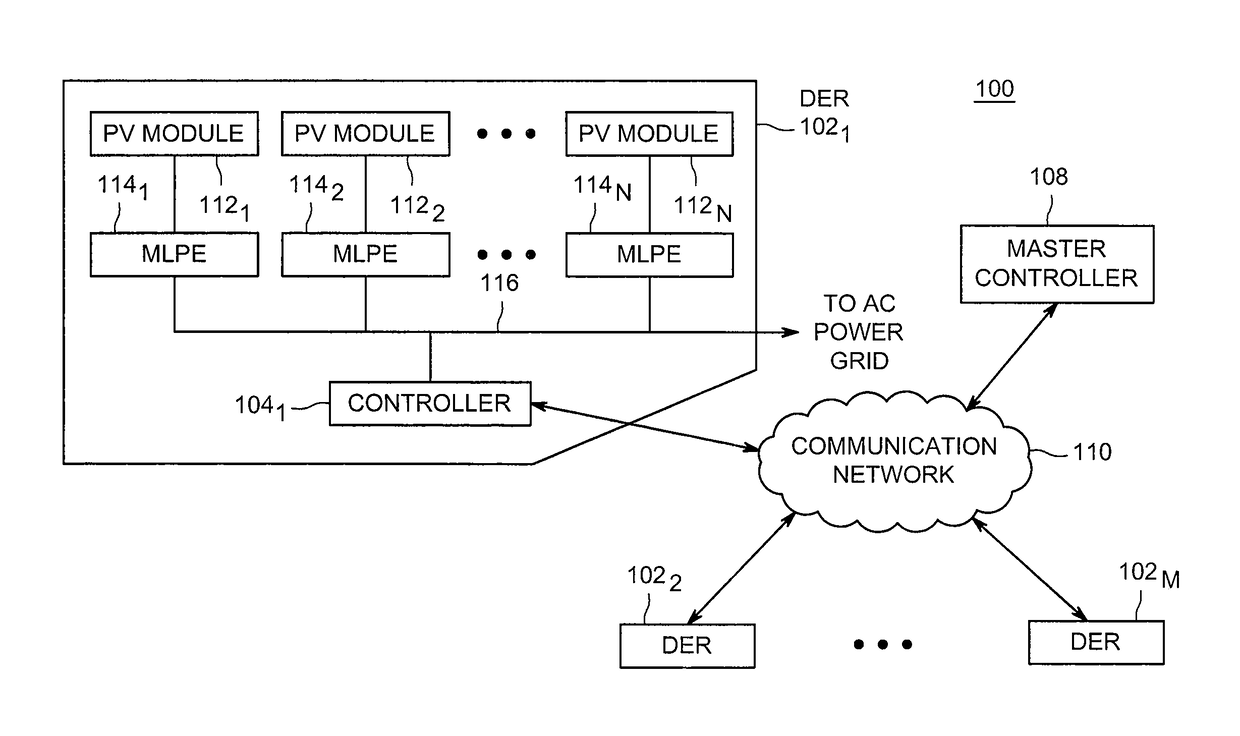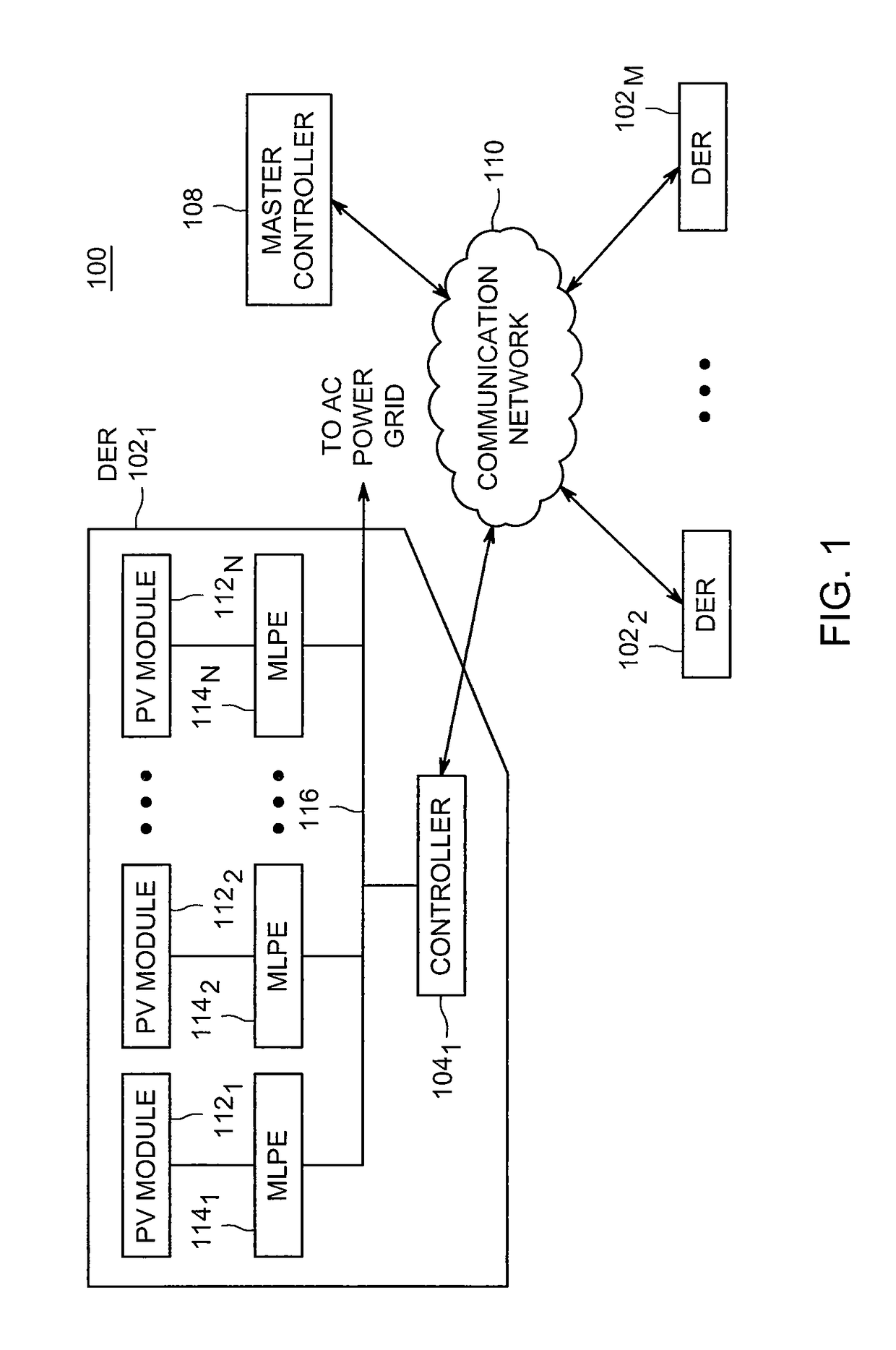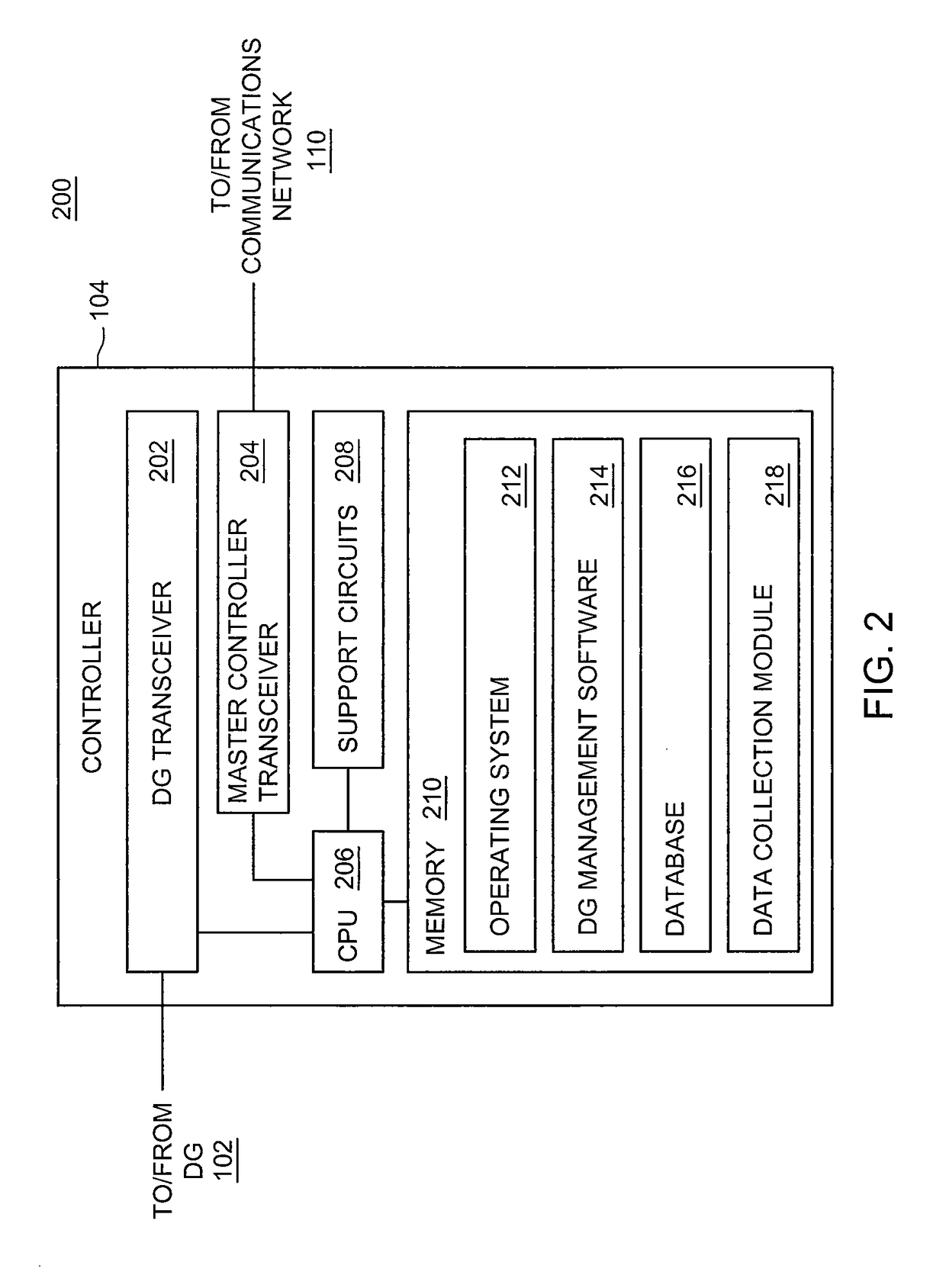Method and apparatus for using module-level power electronics data for validating distributed energy resource system parameters
- Summary
- Abstract
- Description
- Claims
- Application Information
AI Technical Summary
Benefits of technology
Problems solved by technology
Method used
Image
Examples
Embodiment Construction
[0018]Embodiments of the present invention generally relate to a method and apparatus for using module-level power electronics (MLPE) located proximate one or more photovoltaic (PV) modules of a distributed energy resource (DER) to validate at least one system parameter of the DER. The validated data may subsequently be used to compute operating characteristics of the DER under real-world operating conditions. In some embodiments, such as the embodiment described below, the MLPE is a DC-AC power conditioner (which may also be referred to as a microinverter or simply inverter) that is coupled to a PV module, although in other embodiments the MLPE may be another type of power conditioner such as a DC-DC converter. The MLPE measures parameters such as temperature, DC current and DC voltage, and some or all of such MLPE data is time-stamped and used in validating at least one DER system parameter. The validated data may subsequently be used to compute operating characteristics of the DE...
PUM
 Login to View More
Login to View More Abstract
Description
Claims
Application Information
 Login to View More
Login to View More - R&D
- Intellectual Property
- Life Sciences
- Materials
- Tech Scout
- Unparalleled Data Quality
- Higher Quality Content
- 60% Fewer Hallucinations
Browse by: Latest US Patents, China's latest patents, Technical Efficacy Thesaurus, Application Domain, Technology Topic, Popular Technical Reports.
© 2025 PatSnap. All rights reserved.Legal|Privacy policy|Modern Slavery Act Transparency Statement|Sitemap|About US| Contact US: help@patsnap.com



